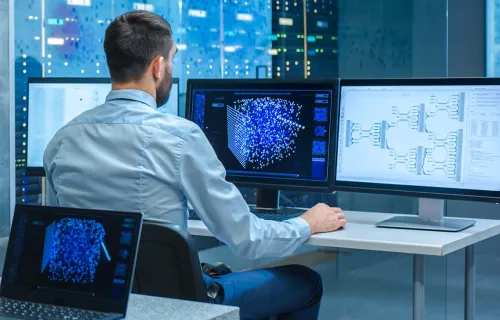About a year ago, Apple launched a new technology called iBeacon. This technology makes it possible for a smart device (phone or tablet) to perform an action when it comes in proximity to an iBeacon, which is a type of low-cost transmitter. The possibilities of iBeacons seem limitless, and they have the potential to create value across many industries.
In the travel industry, for example, iBeacons could be used to add value both to passengers, as well as transport operators such as airports. Here are just a few illustrations:
![]()
Arrival
When arriving at the airport, passengers could receive updates on their flights, including their designated check-in counters and also directions to the security check-in with the shortest line. They also could be informed of their gate numbers and the average time it takes to get to the gate from the terminal entrance.
After security check-in
Passengers could receive context-based marketing messages, depending on the departure times for their flights and the distance to their gates. If there is little wait time for their flights, they could be offered a discount on coffee or a snack. If there is a longer wait time, the offer could be a discount on clothes or perfume or even dinner.
Moving through the airport
With iBeacon technology, airports can benefit from a real-time view of how passengers move across their facilities. By analyzing this information, it is possible to predict scenarios and address them before they even happen by, for example, opening an extra security check-in line, adding staff to the information office, or preparing more sandwiches when there are flight delays.
Arrival at destination airport
When arriving at a destination airport and after passing security checks, iBeacon technology could be used to provide passengers with directions to pre-booked taxis or rental cars. The context-based messages could include directions to the level or area to which they should proceed.
These are just a few hypothetical examples of the potential impact of iBeacon technology on air travel. Today, there are many real-life examples of the technology already in use in industries such as retail. In fact, in my next blog, I’ll share how CGI has used it to enhance park management and the customer experience for one of the largest theme parks in Europe. Many of the iBeacon benefits delivered to this park have cross-application to the transport and logistics industries.
iBeacons will likely become an integral part of the customer experience across many industries in the future. In light of this, it is important for organizations to evaluate the implications of this new technology as they strategize on ways to enhance the customer experience, improve operations and strengthen their competitive positions.
If you would like to learn more about how iBeacon technology can add value to your business, contact us for a discussion.





